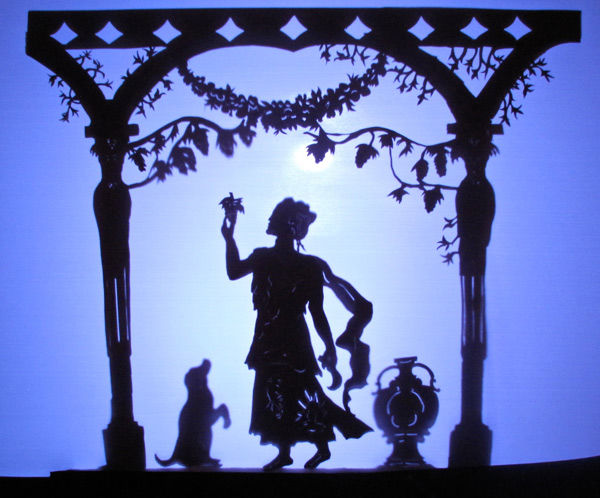Real life
My soul’s greatest peace lies somewhere beyond the moon.
In time, I will travel to that place and settle there.
For now, only in my mind may I visit,
and upon each returning, I become more convinced
that I exist now only in a shadowland, as if behind a
sheet,
set up for a puppet theater.
I am a silhouette and all I see are the same.
When I, once and for all, can walk through that realm
and touch the things that provide its array,
I will experience the first reality I've ever had.

Inspired by Pieter Coecke van Aelst's Vertumnus and Pomona tapestries -- Caroline Borderies
Pieter Coecke van Aelst was a 16th-century painter, sculptor, architect, author, and translator of Latin and Italian architectural treatises into Flemish, French, and German. He also designed woodcuts, goldsmith's work, stained glass, and tapestries. His daughter married Pieter Brueghel the Elder, and his 2nd wife was the 1st teacher of her grandchildren Petrr Brueghel the Younger and Jan Brueghel the Elder. One of his tapestries, "The Story of Vertumnus and Pomona," was woven under the direction of Willem de Pannemaker. Publius Ovidius Naso related the tale: Pomona (from "pomum," Latin for orhard fruit) was the goddess of fruit trees, gardens and orchards, and her attrubute was a pruning knife. She was seduced by Vertumnus, the god of seasons, change, plant growth, gardens, and fruit trees. Since he could change his form at will, he disguised himself as an old woman to trick Pomona into letting him into her orchard in order to seduce her. In the "Metamorphoses" Ovidius observed that the kind of kisses given by Vertumnus were never given by an old woman: "so Circe's smile conceals a wicked intention, and Vertumnus' hot kisses ill suit an old woman's disguise."
ReplyDelete